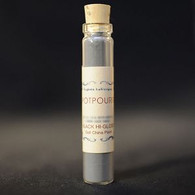 Loading... Please wait...
Loading... Please wait...- 972-299-9680 order line: 1-888-833-8725
- Home
- My Account
- View Cart
How To
How to Mix Paint with Mix & Paint Oil or WaterSilks
Use a toothpick or brush handle to help shake out 1/8 teaspoon or more paint onto your tile or grinding glass. Several inches away from the paint drop a dime size puddle of media. Pick up a little media with your palette knife and put it in to your paint. Grind in little circles pressing VERY HARD with the blade. Scrape the mixture up in a pile, gathering up all the scattered grains, turn the knife over and grind again. The mixture needs to be the consistency of toothpaste. Pick up more media as necessary, a tiny bit at a time. Continue grinding, scraping up, and turning the palette knife over each time until the paint looks and feels smooth and creamy, Grinding should be done vigorously for two minutes. Scrape the paint into a neat pile or transfer to a clean tile. If you have used Mix & Paint Oil your paint will stay creamy for several weeks, even if left uncovered. If you have used WaterSilk it will stay creamy for several days.
Black specks (mildew) appearing on your doll after a china fire is caused by some porosity in the bisque. Bisque must vitrify (become glass-like) or the media holding the paint can penetrate the surface during the heat of a china firing and cause spots. Completely vitrified bisque cannot have mildew. Use self-supporting test cones in all areas of your kiln to detect cool spots. Leave a minimum of one inch of space between pieces when bisque firing. Avoid excessive use of media when painting. Maybe the coils in your kiln have oxidized to the extent that you need new ones.
We recommend that you build up cheek color with two or more color applications, firing each time of course, rather than one heavy coat. Smoother, even color will be your reward for this effort.
Attention to first time users: Virginia LaVorgna's china paint does not fade in the kiln. Apply the colors the way you want them to be.
All Classic Victorian Colors are gloss paints. For less gloss use more medium. Blotting or stippling reduces gloss. Be very cautious of using matting agents as too much can take away the lovely satin sheen that we want on our doll faces.
Brush Care
All blenders and mops need to be washed with soap and water prior to the first use and again after ever use. Wet brush in running water and rub the hairs across a bar of mild soap such as Lux or Ivory. Work the soapy brush up and down in the palm of your hand then rinse in running water until clean. You may need to repeat the process. Squeeze the water out then twirl the handle between your hands until the hairs fluff. You can hasten drying time with a blow dryer.
New Products
-
$15.00
-
$8.00
-
$227.00
-
$227.00
-
$43.00





